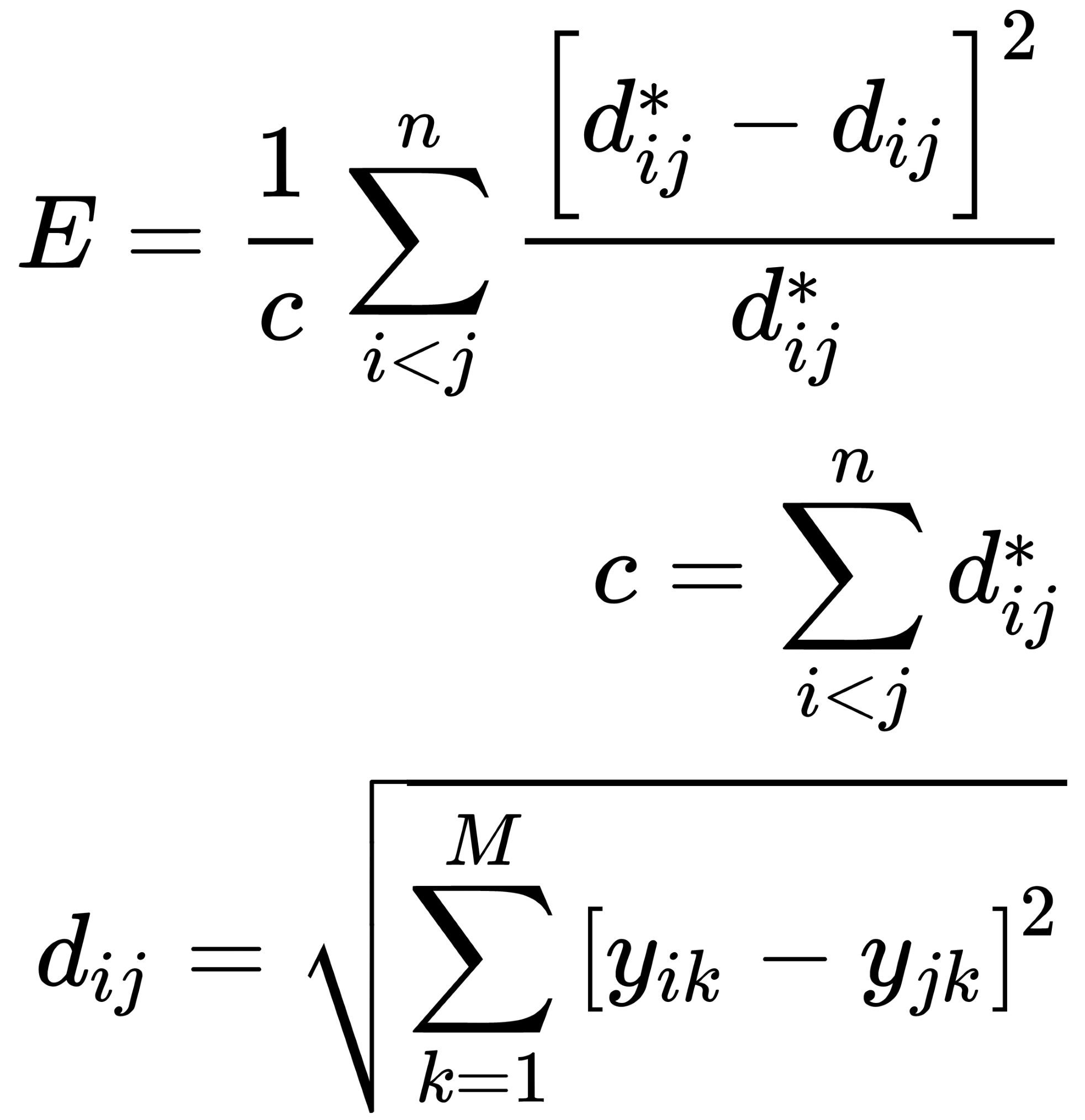Sammon mapping is one of the first non-linear dimensionality reduction algorithms. In contrast to traditional dimensionality reduction methods, such as PCA, Sammon mapping does not define a data conversion function directly. On the contrary, it only determines the measure of how well the conversion results (a specific dataset of a smaller dimension) correspond to the structure of the original dataset. In other words, it does not try to find the optimal transformation of the original data; instead, it searches for another dataset of lower dimensions with a structure that's as close to the original one as possible. The algorithm can be described as follows. Let's say we have  -dimensional vectors,
-dimensional vectors,  . Here,
. Here,  vectors are defined in the
vectors are defined in the  -dimensional space,
-dimensional space,  , which is denoted by
, which is denoted by  . The distances between the vectors in the
. The distances between the vectors in the  -dimensional space will be denoted by
-dimensional space will be denoted by  and in the
and in the  -dimensional space,
-dimensional space,  . To determine the distance between the vectors, we can use any metric; in particular, the Euclidean distance. The goal of non-linear Sammon mapping is to search a selection of vectors,
. To determine the distance between the vectors, we can use any metric; in particular, the Euclidean distance. The goal of non-linear Sammon mapping is to search a selection of vectors,  , in order to minimize the error function,
, in order to minimize the error function,  , which is defined by the following formula:
, which is defined by the following formula:

To minimize the error function,  , Sammon used Newton's minimization method, which can be simplified as follows:
, Sammon used Newton's minimization method, which can be simplified as follows:

Here, η is the learning rate.
